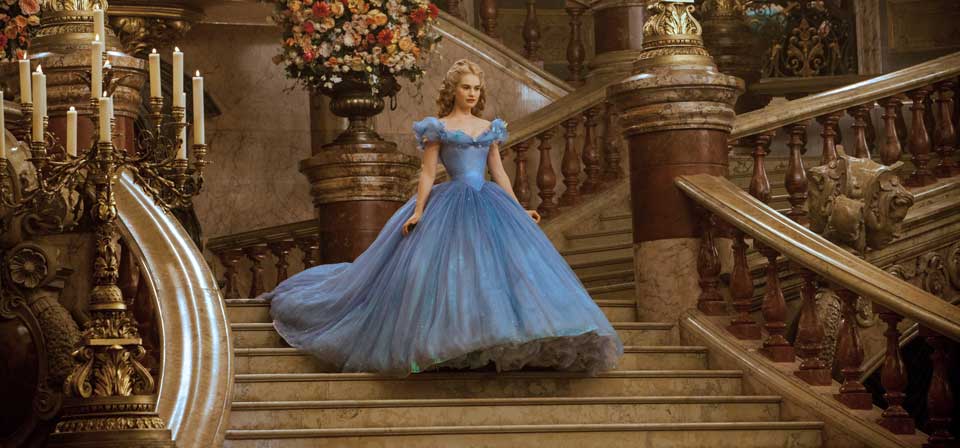Rodgers & Hammerstein’s Cinderella (1965)
There may be no dethroning the Disney cartoon as the definitive musical retelling of the story of Cinderella in the popular imagination; but for my money Rodgers & Hammerstein’s made-for-TV musical is a better take on the timeless fairy tale set in stone by Charles Perrault, and a better introduction to the story for children.
Caveat Spectator
Nothing objectionable.Not only are there no singing mice, the songs by Rodgers & Hammerstein are far superior than the Disney version’s unmemorable soundtrack, and do a better job at serving the story. “The Prince is Giving a Ball” dramatizes the significance of the occasion for the whole kingdom, especially its eligible young women, better than anything in the Disney version. “Ten Minutes Ago” and “Do I Love You Because You’re Beautiful?” are far more romantic and catchy than “So This is Love.” I even prefer “Fol-de-rol and fiddle dee dee and fiddley faddley foddle” to “Bibbidi-Bobbidi-Boo.”
The best-known version of R&H’s Cinderella, and in some ways the best, is the classic 1965 version starring Lesley Ann Warren — though the long-neglected 1957 original starring Julie Andrews is also well worthwhile.
Both versions feature the same songs, but the scripts differ significantly, and each has its charms. The 1965 version starts slower than the 1957 version, deferring the opening number for an incidental, anonymous initial meeting between Cinderella and Prince Charming (Stuart Damon, “General Hospital” ’s Dr. Quartermaine) that gains in resonance as the story progresses, and adds a bit of depth to the fairy tale’s love-at-first-sight premise. In this version, when the Prince sings “Ten Minutes Ago,” we know (though he doesn’t, at least consciously) that their history actually goes back a bit further than that.
Warren, with her wide eyes and long neck, is a bit like a less glamorous Audrey Hepburn, and makes an ideal Cinderella. (Hepburn, of course, played Cinderella figure Eliza Doolittle in the screen version of My Fair Lady — a role originated on Broadway by Julie Andrews, who also played Rodgers & Hammerstein’s Cinderella in the original 1957 production.)
Celeste Holm makes a fine Fairy Godmother, and it’s lovely to see Ginger Rogers as the Queen, though it makes for a terrible tease when the King (Walter Pidgeon) leads her out onto the ballroom floor for a dance that’s merely a stately procession (perhaps the 54-year-old Rogers had no more dancing in her, but either way it’s a melancholy moment).
What finally nails the 1965 version’s status as the definitive musical Cinderella is its fidelity to the climax of Perrault’s tale, altered both in the Disney version (cleverly) and in the 1957 version (misguidedly). We all know how the story is supposed to end, with the herald stopping at Cinderella’s house on his way all over the kingdom, trying the glass slipper on Cinderella’s stepsisters and almost missing Cinderella herself before discovering that she’s a perfect fit. We know that’s how it goes — but this is the version that actually goes that way.
Related

Cinderella (2015)
Kenneth Branagh’s Cinderella is such a gallant anachronism, such a grandly unreconstructed throwback, that it offers, without ever raising its voice, a ringing cross-examination of our whole era of dark, gritty fairy-tale revisionism.
Rodgers & Hammerstein’s Cinderella (1957)
Despite the formidable star power of no less than Julie Andrews, this original version of Rodgers & Hammerstein’s made-for-TV musical Cinderella has been astonishingly neglected, overshadowed by the 1965 version starring Lesley Ann Warren.
Cinderella (1950)
Coming in the wake of a string of early classics — Snow White and the Seven Dwarfs, Pinocchio, Fantasia, Dumbo, Bambi — Disney’s Cinderella represents, alas, the early stages of Disney-itis.
Recent
- Benoit Blanc goes to church: Mysteries and faith in Wake Up Dead Man
- Are there too many Jesus movies?
- Antidote to the digital revolution: Carlo Acutis: Roadmap to Reality
- “Not I, But God”: Interview with Carlo Acutis: Roadmap to Reality director Tim Moriarty
- Gunn’s Superman is silly and sincere, and that’s good. It could be smarter.
Home Video
Copyright © 2000– Steven D. Greydanus. All rights reserved.